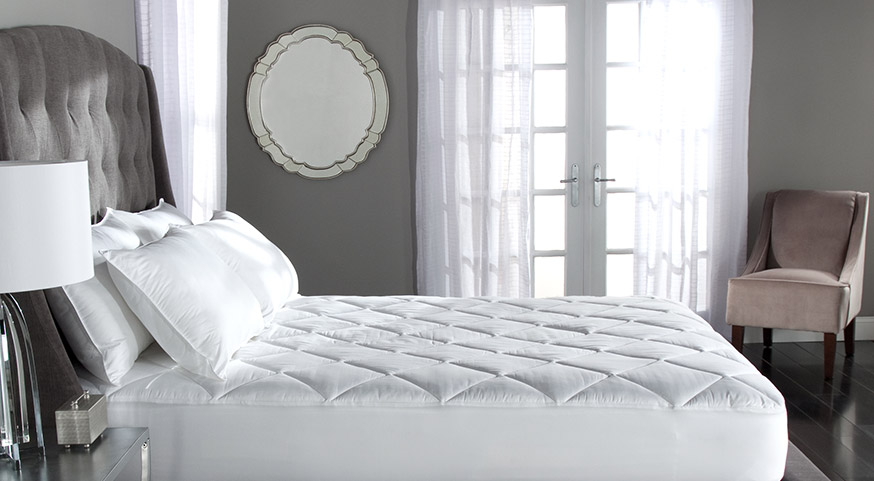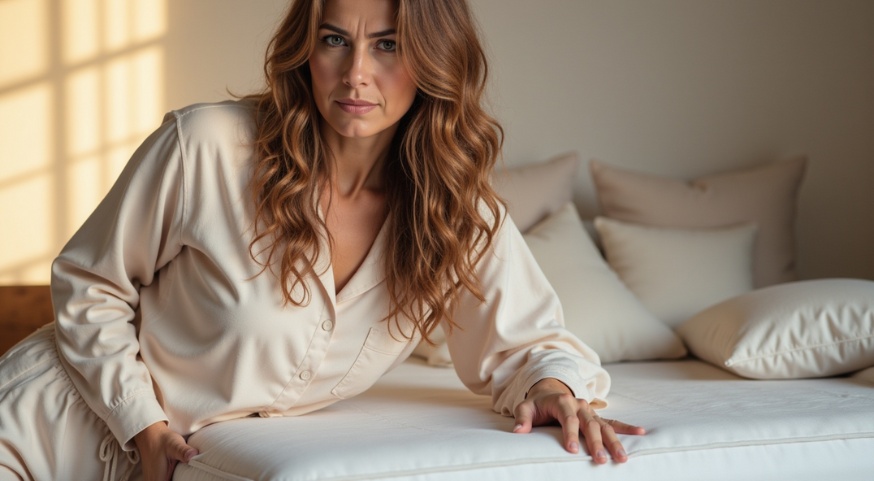Posted by Stefan Hunter on Jun 09, 2017
3 Key Choices That Make Your Bedroom More Relaxing
America is suffering from a public health epidemic and you may be a part of it, without even knowing it.
What is it?
According to the Centers for Disease Control and Prevention (CDC), it's insufficient sleep, and it's causing a litany of health problems. The CDC says as many as 70 million people suffer from sleep problems, and many of those problems could be solved simply by making a few décor changes that can help us fall asleep more quickly, sleep more deeply, and wake feeling more rested.
Here are three ways you can make sure you're getting the good night's sleep you need to stay healthy:

Create Your Own, Personal Nest
The one factor most responsible for feeling rested and relaxed in a bedroom is the bedding. Invest in the highest quality hotel bedding you can afford, and it will provide a feeling of pampered luxury that inspires calm and helps your stress melt away. Natural products, including cotton sheets and down bedding, keep your body at a comfortable temperature by allowing your skin to breathe. Plus, having soft, luxurious bedding makes going to bed something to look forward to, instead of the last chore in a long list of daily tasks.
In addition to providing superior comfort and temperature control, down bedding is also lightweight, so you don't feel cramped or burdened by your covers. If you decide to go with a duvet, you have the added advantage of being able to change your décor quickly and easily by investing in a few different duvet covers.

The Soothing Effect of Color
According to an interesting study of 2,000 homes conducted by Travelodge, the color of our bedrooms may also have a direct effect on the length and quality of our sleep. That study found those who slept in blue rooms slept the most, while those who slept in purple rooms slept the least, two hours less, on average. Researchers say the eye cells that respond to blue send the strongest signals to the deep area of the brain responsible for our 24-hour cycles, which may explain why blue encourages longer sleep. Green and yellow also earned top honors, while gray and brown ranked only slightly higher than purple.
Creating a relaxing room also depends on the way colors are used. In general, rooms that use no more than two predominating colors, combined with neutrals like white or ivory, create the most relaxing palette. Too many colors or patterns can be disruptive or stimulating; working against rest and relaxation. Consider painting walls a light shade of your color of choice, adding occasional pops of a darker color in the same shade, all tied together by soft down bedding in a pale shade for a calm, soothing effect.

Create an Oasis with Light
When choosing lighting options for your bedroom, consider using a layered approach, incorporating brighter, generalized lighting for use when completing tasks and softer task lighting near the bed for nighttime reading. Having a dimmer switch lets you turn down bright overhead lights for an all-over glow. You could also invest in remote control outlets or an app that allows you to control your lights without having to leave the comfort of your bed.
Some consumers recommend using pink-hued light bulbs for bedside lamps, as these bulbs provide a softer light that promotes relaxation. But whichever type of bulb you choose, try not to fall asleep with the lights on. Why? Studies have found having the lights on while we sleep, even for brief periods of time, can have a negative impact on our overall quality of sleep as well as our health, increasing our risks for developing cancer, depression, obesity, diabetes and reproductive disorders.
Getting a good night's sleep is important for your health and well-being, as well as your ability to remain alert and productive throughout your busy workday. Making just a few, simple changes, like investing in high-quality bedding, choosing a soothing color scheme and adjusting your lighting can make a big difference in your ability to get those all-important Zs











